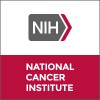Raloxifene in Preventing Breast Cancer in Premenopausal Women
Breast Cancer

About this trial
This is an interventional prevention trial for Breast Cancer focused on measuring breast cancer
Eligibility Criteria
DISEASE CHARACTERISTICS: At risk for developing invasive breast cancer by virtue of 1 of the following criteria: Gail model risk equal to that of an average 60 year old woman as determined using the Gail risk assessment model Lobular neoplasia Atypical ductal hyperplasia with a positive family history of breast cancer Ductal carcinoma in situ previously treated with mastectomy or lumpectomy and radiation BRCA1 or BRCA2 mutation-positive genotyping Family history consistent with hereditary cancer syndrome of increased breast cancer risk defined as 1 of the following: Family with more than 2 breast cancer cases and one or more cases of ovarian cancer diagnosed at any age Family with more than 3 breast cancer cases diagnosed before age 50 Sister pairs with 2 breast cancers, 2 ovarian cancers, or 1 breast and 1 ovarian cancer diagnosed before age 50 Premenopausal Menstrual cycle of 26-35 days No change in menstrual pattern within the past 6 months (no irregularities) FSH level less than 20 mIU/mL Hormone receptor status: Not specified PATIENT CHARACTERISTICS: Age 23 to 47 Sex Female Menopausal status Premenopausal Performance status Not specified Life expectancy Not specified Hematopoietic No history of bleeding disorder Hepatic No history of cirrhosis of the liver SGOT/SGPT no greater than 3 times upper limit of normal (ULN) Renal Creatinine no greater than 1.7 mg/dL Cardiovascular No history of pulmonary embolism or deep venous thrombosis Other Not pregnant or nursing Negative pregnancy test Fertile participants must use effective non-hormonal contraception (e.g. barrier methods, spermicides, or surgical methods) during and for 3 months after study No history of infertility with a suspected ovarian etiology or recurrent ovarian cysts No allergy to raloxifene No dysfunctional uterine bleeding No menorrhagia No cervical dysplasia or significant uterine pathology requiring concurrent surgery No medical or psychiatric disorder that would preclude study participation Normal CA 125 levels PRIOR CONCURRENT THERAPY: Biologic therapy Not specified Chemotherapy Not specified Endocrine therapy At least 6 months since prior steroid therapy (e.g., tamoxifen, estrogen, DHEA, anabolic steroids, or oral contraceptives) Radiotherapy See Disease Characteristics Surgery See Disease Characteristics No prior hysterectomy
Sites / Locations
- Medicine Branch
Outcomes
Primary Outcome Measures
Secondary Outcome Measures
Full Information
1. Study Identification
2. Study Status
3. Sponsor/Collaborators
4. Oversight
5. Study Description
6. Conditions and Keywords
7. Study Design
8. Arms, Groups, and Interventions
10. Eligibility
12. IPD Sharing Statement
Learn more about this trial
